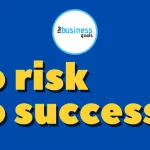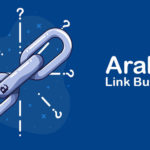As the markets begin to reopen after the post pandemic stagnation, the current ecosystem could be more business friendly. Businesses are doing their best to remain competitive on the current markets. To do this, they will need effective leadership. Everyone, from Senior Managers to HR professionals must pull their socks off and provide inputs to ensure that the organization is continuously developing.
MAXIMIZE PRODUCTIVITY as an Entre…
Pause
Unmute
Remaining Time: -2:52
Fullscreen
MAXIMIZE PRODUCTIVITY OF ENTREPRENEUR
Do you believe that business leaders are lacking in training and competence? It’s now time to train these leaders. Offering executive coaching can be the next big step in business development.
This article describes the various types of executive coaching. Let’s try to understand this.
What Types of Coaching Are Available for Executives?
This is a list with different types of executive coaching. We will try to explain it so you can better understand the facts. We will try to explain them here.
- Executive Coaching
If you believe that your company is experiencing leadership issues, then you should consider executive coaching. Hire an executive coach to help your leaders develop the skills and competencies they need to grow the organization. Executive coaches talk one-on-one with executives about different aspects of building competency. - Leadership Development
Leadership development is a key factor in the success of any business. It is because leaders are the ones who make decisions within a company. They are the ones who determine your business’s long-term success.
Leadership development is a process that involves:
Communication.
Coaching.
Accountability.
Influence and negotiation.
Change management is the process of managing change.
Coaching takes place at various levels. Leaders gradually develop and improve their competencies. In turn, they help the organization achieve success over the long term.
- Changes in Organization
This is a very large and complex topic. This includes many things, such as innovation, the implementation of new technologies, mergers with other entities, and major reorganizations.
Leadership is responsible for bringing about organizational changes. The business coach must:
Examine the current weaknesses and threats facing the leadership.
Motivate your employees and leaders to bring about positive changes in the organization.
Deliver the message of change.
Make the changes to your organization personal.
- First 100-day coaching
The coaching is done weekly or twice a month over a period of three months. Its main goal is to develop a quick understanding of business demands and the roles of different departments.
Strategic planning is developed within the 100-day program. The coaches meet with executives and leaders in order to discuss:
Strategic planning.
Organizational design.
Delegation.
Possibilities for business and other core areas.
The coach will also focus on developing the personality and leadership skills of the athlete so they can be able to overcome these challenges and create a path for growth and development.
- Strategic Coaching
The strategic coaches are in charge of defining the long-term strategy and implementing it for the organization. They work closely with the executives to define and execute the plans. You are aware that coaches help guide an organization’s top level to create and plan its own path.
Leaders have a vision, which is a key part of the strategy plan. This statement is a summary of what your company will look like over the next few years. Other things mentioned in the conversation include:
Goals and objectives.
Plans of action
SWOT Analysis
KPIs
The team is very good at identifying the causes of failure in organizations.
In addition to this, leadership develops the skills and competencies necessary for the creation of actionable goals. It is clear that organizational development and leadership development are closely related.
Closing the Discussion
A business’s ultimate goal is to achieve success over the long term. The management is committed to the success of an organization.
They also understand the current requirements and develop strategies in line with them. These requirements are used to prepare the leaders and executives for the challenges that lie ahead.








